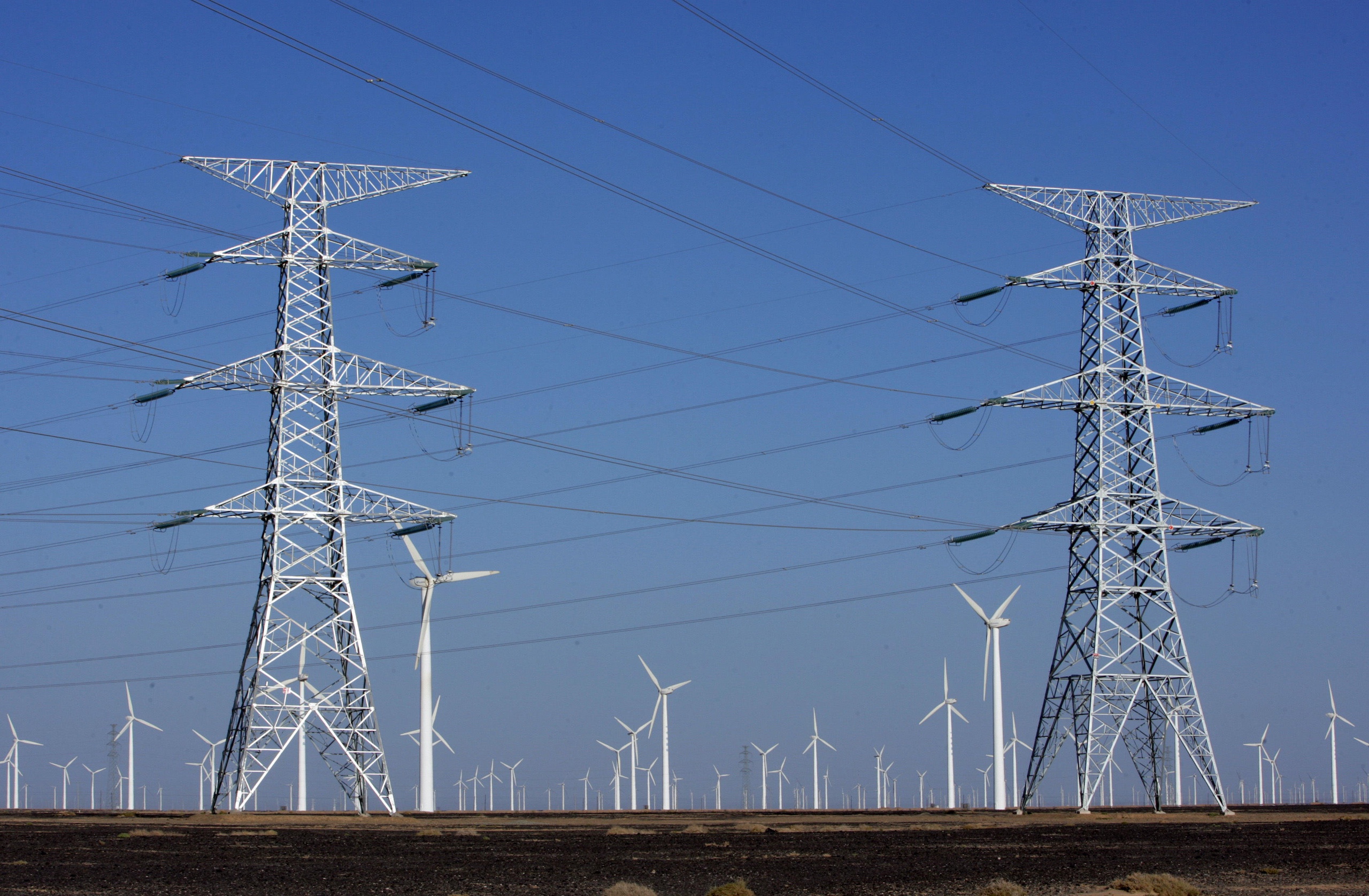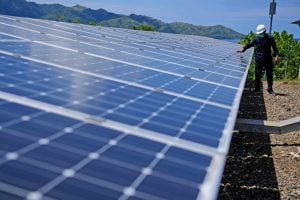A common misconception about China’s power grid is that local protectionism and trade barriers are hindering its use and the integration of renewable energy. This widely discussed issue distracts from the important improvements that need making, such as redesigning dispatch rules, increasing grid flexibility, and making the power system’s operations more transparent.
Moreover, the misdiagnosis overestimates the role and influence of local government in shaping power system operation and steering investment. It obscures the real challenges China’s rapidly expanding renewable energy sector will face in the coming years.
A transforming energy system
As the world’s largest emitter of greenhouse gases, China’s policies and actions affect global efforts to address climate change. China has committed to peaking its carbon emissions before 2030 and achieving carbon neutrality before 2060. These ambitious targets require a fundamental transformation of the national energy system, particularly the power sector, where coal accounted for 63% of electricity generation in 2023. The expansion of competitive renewable energy sources, like wind and solar, is key to achieving China’s climate goals.
By the end of 2024, China had installed about 520 GW of wind and over 880 GW of solar capacity, more than any other country, while wind and solar collectively accounted for around 16% of its electricity mix.
This progress follows earlier challenges. From the early 2010s to around 2016, the rapid expansion of renewables was marred by high curtailment, meaning wastage. At its peak, curtailment for wind and solar reached 30-40% in some regions due to grid integration issues. The situation then improved, with the figure dropping to about 5%, in line with the government limit. But since late 2024, some preliminary data has suggested curtailment may be rising again.
Despite improvements, the narrative persists – both domestically and internationally – that the high curtailment was primarily caused by local protectionism and trade barriers. This imprecise view permeates not only general policy circles, but also shapes the approaches of power sector researchers and analysts. It risks undermining China’s ability to prevent a resurgence of high curtailment and capitalise on renewable energy in the coming years.
The local protectionism narrative
The argument holds that local governments preserve local jobs and tax revenue by prioritising their existing coal power assets and the development of local resources, favouring locally produced electricity over renewable energy imports from other provinces.
This perspective surfaces across general policy discussions, academic analyses and industry assessments. It echoes broader macroeconomic trends in China since the 1990s. For instance, the 2024 WTO China Trade Policy Review noted certain forms of provincial protectionist behaviours by local authorities, aimed at favouring local trade and investment over inter-provincial cooperation.
People have naturally extended such thinking to the power sector. However, applying this logic to electricity fails to explain how local governments, even if motivated by protectionism, can translate this into actions that undermine the construction or use of renewables.
Local governments are not all powerful
From an investment perspective, local governments may have a general tendency to maximise investment across all sectors due to soft budget constraints. To put it simply, higher investment is considered better. Following this logic, they should prefer wind and solar as these require more capital investment than conventional power generation like coal. Furthermore, the total size of coal power capacity is largely planned and controlled by the central government through the National Energy Administration (NEA). This control is not always stable or absolute, but it significantly limits local government influence over the total size of the coal fleet.
Two recent observations illustrate the increasing constraint on local government influence over power sector patterns: local power shortages and over-reliance on imported power.
Several provinces in central and east China, especially Hunan, Jiangxi and Zhejiang, are close to experiencing shortages in power capacity, not because of price distortion but a lack of installed generation resource.
Meanwhile, provinces such as Zhejiang have become heavily reliant on imported power. It is expected to account for up to 50% of Zhejiang’s supply following the recent approval of ultra-high-voltage (UHV) transmission from Gansu. This dependency on power produced in the west of the country poses a risk to power provision, given the nature of long-distance transmission. And as the pricing is set by central government, the imported power may not be cheaper than the local dominating coal benchmark price. This reality indicates the limited control of local governments over local infrastructure and investments.
From an operational perspective, local governments again have minimal influence. While they theoretically have the authority to guarantee a certain number of a local power station’s generation hours, shares actually tend to be nearly identical for power stations of the same technology, leaving limited room for favouritism. So this authority is largely procedural rather than substantive. More importantly, any such allocation must align with the central government’s policy of privileging the distribution of electricity between regions, further limiting local discretion.
Even if local governments were able to intervene by prioritising local coal plants over importing renewables, or through inaction to obstruct trade arrangements, such actions would have little impact on the physical operation of the grid. State Grid and China Southern Power Grid operate across provinces and can still prioritise the cheapest energy sources, which typically means renewables that have already been built. Therefore, local government interventions would not disrupt the optimal functioning of the electricity system nor impede the integration of renewables.
In contrast to the case of north-south grid congestion in Germany, where grid capacity poses the main challenge, China’s integration of renewables faces an energy balancing problem. There are too many coal-fired units providing baseload power. When power demand is low, some generating units need to go offline, but as it takes a long time for coal units to do so, renewables are often curtailed instead.
But these challenges are typically reframed as market problems, such as a lack of market openness or failure to find trading partners. This makes local governments an easy scapegoat for the lack of a competition mechanism and an overall optimal design at the higher system level.
Recent regulatory changes
In recent years, the competitiveness of different power generation sources in China has shifted rapidly. For example, solar has become far cheaper due to manufacturing overcapacity, and coal power has suffered less thanks to the declining price of coal. Such shifts have been accompanied by significant regulatory updates.
In November 2023, the National Development and Reform Commission (NDRC) and the National Energy Administration (NEA) introduced a coal capacity pricing mechanism. Effective from January 2024, it saw coal power plants receive fixed payments based on their capacity, regardless of electricity generation. This is more like a coal power subsidy than the standardised “capacity payment” used to target system adequacy issues in other, liberalised power systems.
A new regulation came into effect in April 2024 that mandates the guaranteed purchase of renewable energy. This involves the grid purchasing part of the output of wind and other non-hydro renewable projects, while the rest must be traded on the market. The market-traded portion is sold through competitive mechanisms involving bilateral sellers and users.
Further changes came in May 2024, when the government lowered the target for renewable energy utilisation from 95% to 90%, signalling a more relaxed regulatory stance on grid companies’ obligations to integrate renewables. By June, this adjustment was reaffirmed in a directive from the NEA aimed at improving the overall quality of renewable energy development. In May, the NEA reported declining utilisation rates for wind and solar energy in certain regions. Data from the National Renewable Energy Consumption Monitoring and Early Warning Center shows that curtailment rates had remained below 5% on average. However, emerging trends in November and December suggest the possibility of significantly higher curtailment in some areas.
Moving forward
If high curtailment is primarily driven by local government priorities or a lack of trading arrangements, the proposed solution would naturally focus on promoting market-based transactions, assuming that addressing contractual issues will enable smoother integration of renewables.
However, this transaction-focused approach overlooks a simpler and more effective “top-down” solution, such as implementing overall economic dispatch that pools all electricity into a common market. Unifying China’s fragmented power markets and reducing price interventions would make it easier for renewable generators to obtain fairer prices more easily.
For example, annual and monthly transactions, which account for over 80% of trades with much longer lead times than day-ahead, are often over-contracted and require “hourly profiles”. In other words, power generators must predict their hourly power output far in advance. This creates a bias against renewables since it is not possible to make such predictions accurately.
Further, electricity producers and consumers often have mismatched profiles. For example, the demand of a data centre is constant while the supply of a wind power station is not; and the demand of a household is unpredictable while the supply of a coal-fired power station is controllable. This mismatch makes bilateral trading complex.
Despite renewables’ huge installed capacity, their share in China’s energy mix is only slowly increasing and there is plenty of room for improvement. If there are no significant changes in the operation paradigm of the power system, a much higher than 5% curtailment rate can’t be ruled out in the coming years.
To avoid this scenario, a more transparent system is essential. Systemic issues need addressing, such as redesigning dispatch rules and enhancing grid flexibility through a top-down approach, rather than relying on bottom-up trading partner searches. Understanding the dynamics of China’s renewable energy development, free from misdiagnoses like “local protectionism”, is crucial for global climate goals and effective policies.









